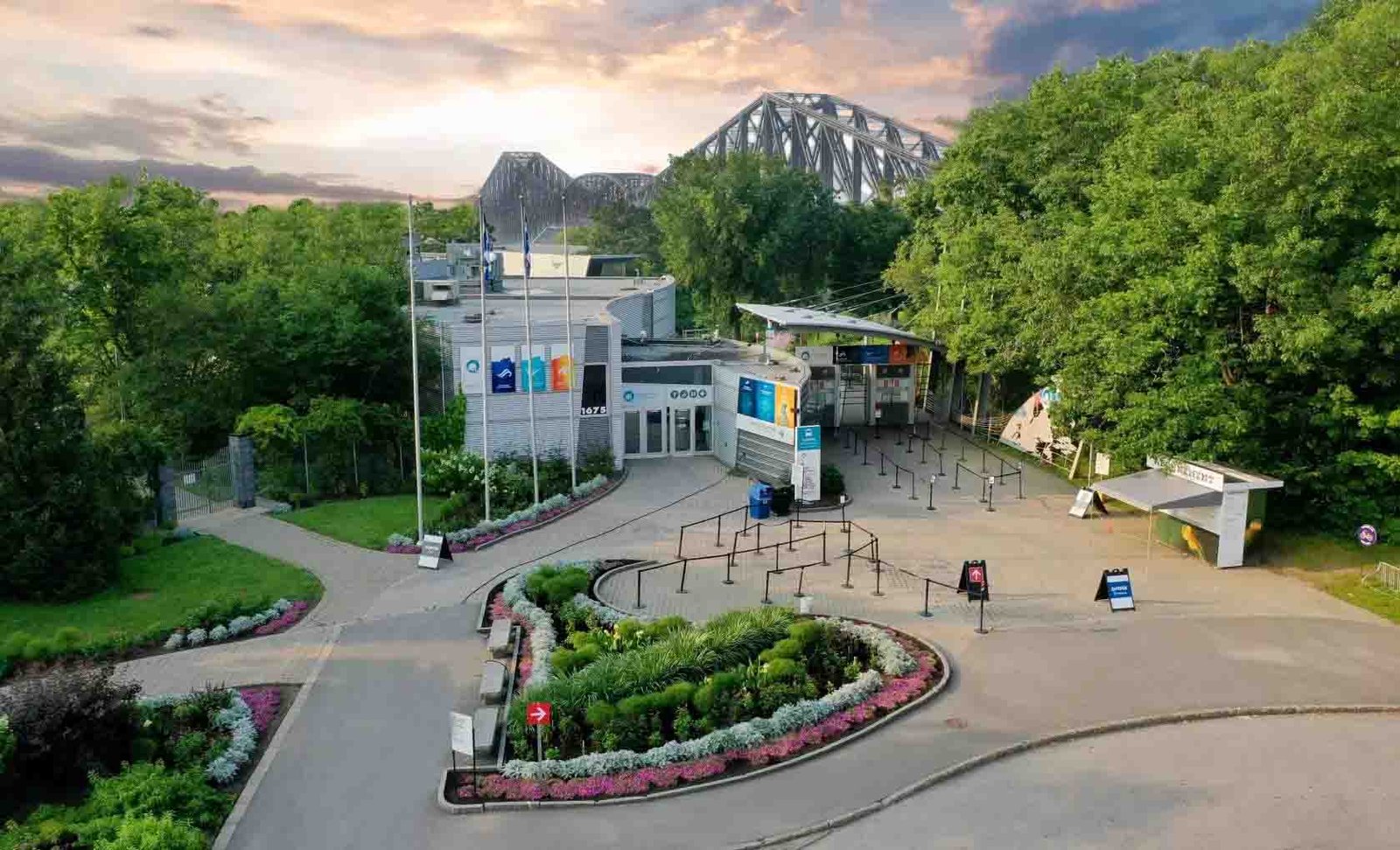Ontario, Canada’s most populous province, is undergoing a significant shift in its demographics. The province’s population is becoming increasingly diverse, with immigration playing a vital role in its growth. Urbanization is also transforming Ontario’s population distribution, with more people moving to cities and urban centres. As the province continues to experience population growth, it faces both challenges and opportunities. The importance of diversity in Ontario’s social fabric cannot be overstated, as it contributes significantly to the province’s economic and cultural vitality. This article will explore Ontario’s shifting demographics, highlighting the trends, challenges, and opportunities that come with a growing and diverse population.
Ontario’s Demographic Profile: An Overview
Ontario’s demographic profile is an essential aspect of understanding the province’s current and future trends. With a population of approximately 14.7 million, Ontario is the most populous province in Canada, accounting for nearly 38% of the country’s total population. The median age in Ontario is 41.1 years, which is slightly higher than the national average of 40.9 years. Females make up 51% of the population, while males account for 49%. The province’s birth rate has been declining over the years, with only 9.6 births per 1000 people in 2019, compared to 11.6 in 2000. At the same time, life expectancy has been increasing, with an average of 83 years for females and 78 years for males. The province’s official language is English, spoken by approximately 70% of the population, while French is spoken by around 4%. Ontario’s Indigenous population accounts for approximately 3% of the total population and includes First Nations, Inuit, and Métis peoples. The province has a diverse ethnic makeup, with visible minorities accounting for nearly 30% of the population. The largest visible minority groups are South Asian (25%), Chinese (21%), and Black (8%). Understanding Ontario’s demographic profile is crucial in addressing issues such as healthcare, education, and social services that cater to the province’s growing and diverse population.
The Role of Immigration in Ontario’s Population Growth
The Role of Immigration in Ontario’s Population Growth
Ontario has become one of the most diverse provinces in Canada due to its high immigration rates. In recent years, immigration has been the main driver of population growth in Ontario, accounting for more than 90% of the province’s population increase. The province has a long history of attracting immigrants from all over the world, and this trend is expected to continue in the coming years.
Immigrants have played a vital role in shaping Ontario’s economy, culture, and society. They bring new skills, knowledge, and perspectives that contribute to the province’s growth and development. Immigrants also help to address labour shortages in key sectors such as healthcare, education, and technology.
The majority of immigrants who come to Ontario settle in the Greater Toronto Area (GTA), which has become one of the most multicultural cities in the world. This influx of immigrants has led to the creation of vibrant communities that celebrate diversity and promote inclusivity.
However, there are also challenges associated with high levels of immigration. One challenge is ensuring that newcomers have access to adequate housing, healthcare, and education. Another challenge is ensuring that immigrants can find meaningful employment opportunities that match their skills and qualifications.
Despite these challenges, immigration continues to be a key driver of Ontario’s population growth and economic success. As such, it is important for policymakers to continue to develop policies and programs that support the integration and success of newcomers in Ontario.
Urbanization and Its Impact on Ontario’s Population Distribution
Urbanization has been a significant factor in shaping Ontario’s population distribution over the past few decades. As more people migrate from rural areas to urban centres, the population of cities and towns has increased dramatically, leading to a decline in rural populations. This trend has been particularly noticeable in the Greater Toronto Area (GTA), which has experienced significant growth due to its booming economy and high quality of life. As a result, many smaller communities outside the GTA have seen a decline in population as people move to larger urban centres for work and other opportunities.
Urbanization has also had an impact on the demographic makeup of Ontario’s population. The concentration of immigrants and visible minorities is higher in urban areas, where they are more likely to find employment and social networks. This has led to greater diversity in cities like Toronto and Ottawa, where newcomers have established vibrant communities and contributed to the cultural fabric of the province.
However, the rapid pace of urbanization has also created challenges for Ontario’s infrastructure and services. As more people move to cities, there is a strain on resources such as housing, transportation, and healthcare. Additionally, urbanization can lead to income inequality, as housing costs rise and low-income residents are priced out of certain neighbourhoods.
Despite these challenges, urbanization also presents opportunities for Ontario’s economy and society. Urban areas are hubs of innovation and creativity, where entrepreneurs can thrive and new ideas can be generated. Furthermore, urbanization can lead to greater efficiency in resource use and reduce the environmental impact of human activities.
Overall, urbanization is a complex phenomenon that has both positive and negative impacts on Ontario’s population distribution. Policymakers must carefully consider these trends and their implications for the province’s future development.
Population Trends in Ontario: What the Numbers Reveal
Ontario’s population has been steadily growing over the past few decades, with the latest statistics revealing a population of over 14 million people. However, this growth is not uniform across all regions of the province. The Greater Toronto Area (GTA) has experienced the most significant increase in population, with almost half of Ontario’s population residing there. This trend is likely to continue, as more people are attracted to the area for job opportunities and a high quality of life. In contrast, many rural areas are experiencing a decline in population due to a lack of job opportunities and an aging population. The demographic makeup of Ontario’s population is also changing, with visible minorities accounting for a growing proportion of the population. In fact, projections suggest that by 2036, visible minorities will make up over one-third of Ontario’s population. This shift towards a more diverse population presents both challenges and opportunities for Ontario. On the one hand, it highlights the importance of promoting social cohesion and inclusion to ensure that all members of society feel valued and supported. On the other hand, it also presents opportunities for economic growth and innovation as businesses adapt to meet the needs of a diverse consumer base. Overall, the population trends in Ontario highlight the need for policymakers to develop strategies that address regional disparities in population growth and promote social inclusion and economic growth.
Challenges and Opportunities of a Growing Population in Ontario
The growing population of Ontario presents both challenges and opportunities for the province. One of the main challenges is the strain it puts on infrastructure and services such as healthcare, transportation, and housing. As more people move to urban areas, there is an increasing demand for affordable housing, which can be difficult to provide in areas with limited space. Additionally, the growing population can put a strain on healthcare services, leading to longer wait times and overcrowding in hospitals.
However, a growing population also presents opportunities for economic growth and innovation. With more people comes more demand for goods and services, creating job opportunities and stimulating economic growth. A larger population can also attract investment and encourage innovation in areas such as technology and renewable energy.
Another opportunity presented by a growing population is the potential for increased diversity. As more people from different backgrounds move to Ontario, there is a greater opportunity for cultural exchange and learning. This diversity can also lead to greater creativity and innovation in various industries.
To make the most of these opportunities while addressing the challenges of a growing population, Ontario needs to invest in infrastructure and services that can support the needs of its residents. This includes investing in affordable housing, expanding public transportation networks, and improving healthcare services. It also means embracing diversity and promoting inclusivity to ensure that everyone has access to the opportunities presented by a growing population.
The Importance of Diversity in Ontario’s Social Fabric
The diversity of Ontario’s population is one of its greatest strengths. It has been enriched by the contributions of people from all over the world, who have brought with them their unique cultures, languages, and traditions. This diversity has created a vibrant and dynamic social fabric that is unique in Canada. The province has long been a magnet for immigrants from around the world, and this trend is set to continue. The government of Ontario recognizes the importance of diversity in its social fabric and has implemented policies to promote it. For example, the Ontario Human Rights Code prohibits discrimination on the basis of race, ethnicity, religion, gender identity, and sexual orientation. The government has also established programs to help newcomers settle in the province and integrate into their communities. These programs provide language training, job search assistance, and other support services to help immigrants succeed in their new home. The importance of diversity in Ontario’s social fabric extends beyond social cohesion. It also has economic benefits. A diverse population brings a variety of skills, experiences, and perspectives that can lead to innovation and creativity. It can also help attract businesses and investors who are looking for a skilled and diverse workforce. In short, diversity is a source of strength for Ontario’s society and economy.
Future Projections: The Changing Face of Ontario’s Population
Ontario’s population is projected to continue growing, reaching approximately 19 million by 2041. This growth will be driven mainly by immigration, which is expected to account for over 80% of Ontario’s population growth in the coming decades. Furthermore, the province’s population is expected to age significantly, with seniors aged 65 and over projected to make up nearly one-quarter of the population by 2041. This demographic shift will have significant implications for Ontario’s economy, healthcare system, and social services. For instance, as the proportion of seniors in the population increases, there will be a greater demand for healthcare services and long-term care facilities. Additionally, an ageing population may lead to a decline in labour force participation rates and productivity, potentially impacting economic growth. It is also important to note that Ontario’s population growth will not be evenly distributed across the province. The Greater Toronto Area (GTA) is projected to continue experiencing significant growth, with its population expected to reach nearly 9 million by 2041. This growth will put additional pressure on the region’s infrastructure, housing supply, and transportation systems. Overall, these projections highlight the need for policymakers to plan and prepare for the changing demographics of Ontario’s population in order to ensure that the province remains prosperous and sustainable in the years ahead.
As we have seen, Ontario’s demographics are rapidly changing and presenting both challenges and opportunities. Immigration has played a crucial role in the province’s population growth, leading to a more diverse and multicultural society. Urbanization is also affecting population distribution, with more people flocking to cities for work and other opportunities. It is important to embrace diversity and recognize its significance in shaping Ontario’s social fabric. As the province continues to grow, it is essential to address the challenges that come with a larger population, such as increased demand for resources and infrastructure. However, there are also many opportunities to be found in this shifting demographic landscape, from innovation and economic growth to cultural enrichment. As we reflect on these trends, it is worth considering how we can ensure that Ontario remains a welcoming and inclusive place for all who call it home.
Population in province:
Alberta, British Columbia, Manitoba, New Brunswick, Newfoundland and Labrador, Nova Scotia, Ontario, Prince Edward Island, Quebec, Saskatchewan






Pingback: Population in city Halifax, province Nova Scotia – Things to do in Canada